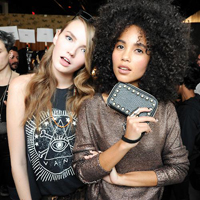American society and many aspects of infrastructure are based on the automobile including the form of transportation it provides, and the identity, freedom, and status a car can have on friends, family, in the workplace, and in society. Among young people ages 13-25, car culture is an important part of their lifestyle, however not necessarily in the manner that most people may think -especially among today’s auto execs and corresponding agencies that continue to be a couple of steps behind the times. While young people are particular in what they want out of their automobile, and are often prolific in their explanations of their favorite kind of automobile over another, they are also realistic based on costs and what they can afford or their parents can afford for them in terms of purchasing a car.
In our North American Youth Culture Studies, and other global studies, we’ve tracked the changes in youth car culture and what it all means to a new generation of drivers. The results are open explanations of why they want a certain type of car, what they want to do with their car/truck when they get it, or what they’re already doing with their cars trucks and motorbikes. The aspect we’ve concentrated on for this story is the growing trend of the after-market car culture. Results in our North American Youth Culture Study quantify what has become an apparent trend: that a growing percentage of young people spend more on after-market customization than the original price of their car. You can also see this in our new Fall Study 2008 that shows 61.1% overall would purchase a Used car compared with 38.9% for New. While often times auto manufacturers are advertising and marketing for new car buyers, they miss the point of the popularity of Used cars. Similar to buying accessories to enhance a fashion look, style, or attitude, (i.e. adding gold necklaces and shiny diamonds like rappers), the bling-bling-ing of one’s car (a.k.a. pimping your ride) with new wheels rims, or a 500 horsepower engine, brings about a certain status that shows more than how much money you’ve invested in your ride, but also the depth of one’s imagination.
From a youth perspective, latest trends in car culture have not been about getting larger SUV’s, which is now also the trend among the mainstream, but in tricking out trashed Nissans, reviving Toyotas, and old caddies with sweet, 20-inch-plus rims. From pro basketball player-turned-car-accessories-entrepreneur, Latrell Sprewell and his motion wheels, to Missy Elliot ‘Lil Kim, Snoop Dogg, and Ice Tea, urban culture, athletes, and rock stars, have all been hyped about the bling-bling of their rides. With MTV’s “Pimp My Ride” and Spike TV’s “Ride with Funkmaster Flex” series, now the average American beater car can, too, be made into an automotive swan.
Young people between 16-25-years-old are among the highest demographic spending money on tricked out stereos, body kits, and wheels. Like fashion, what you ride in, is as important. The trend is similar to the changing dynamics between spending patterns and electronics: Many young people are turning to spending their money on a new digi camera, laptop computer, cell phone, iPod or iPhone than a new pair of sneakers or jeans. While electronics have shifted spending patterns greatly among the youth market in just the past two years, so have cars and the after-market, import-tuning car scene. And while an iPod may be a key accessory, your car is your fashion. You can see it in the most popular magazines, YouTube flicks, and movies -it’s all about the car (or at least the rims and stereo). Not surprisingly, the crossover of automotive fashion has seeped into apparel brands and with even more musicians: Outkast launched an automotive custom deal as well as the kingpins of bling-bling, Ecko clothing.
One way to get a handle on the after-market car culture of America is to check out Dub magazine (www.dubmagazine.com), the bible of the after-market car culture. As editor and founder Myles Kovacs puts it, the once fringe after-market automotive culture has become a Dub Generation. And this Dub Generation has a high percentage of young people who are ethnically diverse, and extremely creative. Dub, the magazine, like the culture, has grown from a niche publication in 1999, to having its own “Super Series” -a national touring Automotive Lifestyle Festival hosting to the hottest tricked-out cars, including Bentleys, Ferraris, import-cars, Smart cars, Hummers, Hybrids, motorcycles, Go-Karts, and mini-cycles. However, unlike the series “Hot Import Nights,” which also hypes car culture, import tuning, and the after-market lifestyle, the Dub Super Series, (like the Lowrider conventions) has their own line of wares, including Dub-branded wheels and rims, and after-market accessories.
In terms of after-market, the main trends are found in the rims, which can run anywhere from a few thousand dollars, to $10,000 a pop. Basically, if you can take a street car and tweak the rims (then the stereo), you’ll have a pimping ride. However the after-market scene -from Dub to lowrider -are awash with cars sporting not only a variety of rims, but custom wheels, hydraulic lifts, stereos with massive subwoofers and multiple speakers, plasma screens, TV monitors, Playstation and Xbox consoles for each passenger (we counted as many as 9 in one car at a recent show), DVD players, custom interiors, rollbars and rollcages, nitrous oxide-enhanced fuel systems, custom paint-jobs, gull-wing and suicide doors, custom frames, and so on. With the pimped cars, there are now some of the most dope clothing apparel, including Fucwell, RasJuDah, Guerrilla Unit, Gunit 50, Royal Blunt, and one of the hottest new trends in footwear called Dada Spree’s–basketball shoes sporting pro player Sprewell “wheels” (which are actually the creation of David Folkes of Davin Wheels) on the ankle, which spin when you walk.
So, when asked, “What type of car would you purchase next?” it’s not all that surprising the higher percentages of Used to New. In addition to the after-market scene, many people believe that it’s better to recycle cars and go for a Used vehicle instead of contributing to the disposable trends of the automotive industry. In general this means a far more savvy demographic when it comes to cars than most automotive industries give youth culture credit for.
What’s also quite interesting is that by gender, the percentages are relatively the same with 61% of females preferring to buy Used and 61.1% of males. By age groups, it’s important to note how things change from 15-17-year-olds and then to 18-20 and 21-25 when young people are often buying their first car. Overall, Used cars are the preference across the board, but peaks among 15-17-year-olds at 65.2%, followed by 61.1% among 18-20-year-olds, and then 53.8% among 13-14-year-olds.


